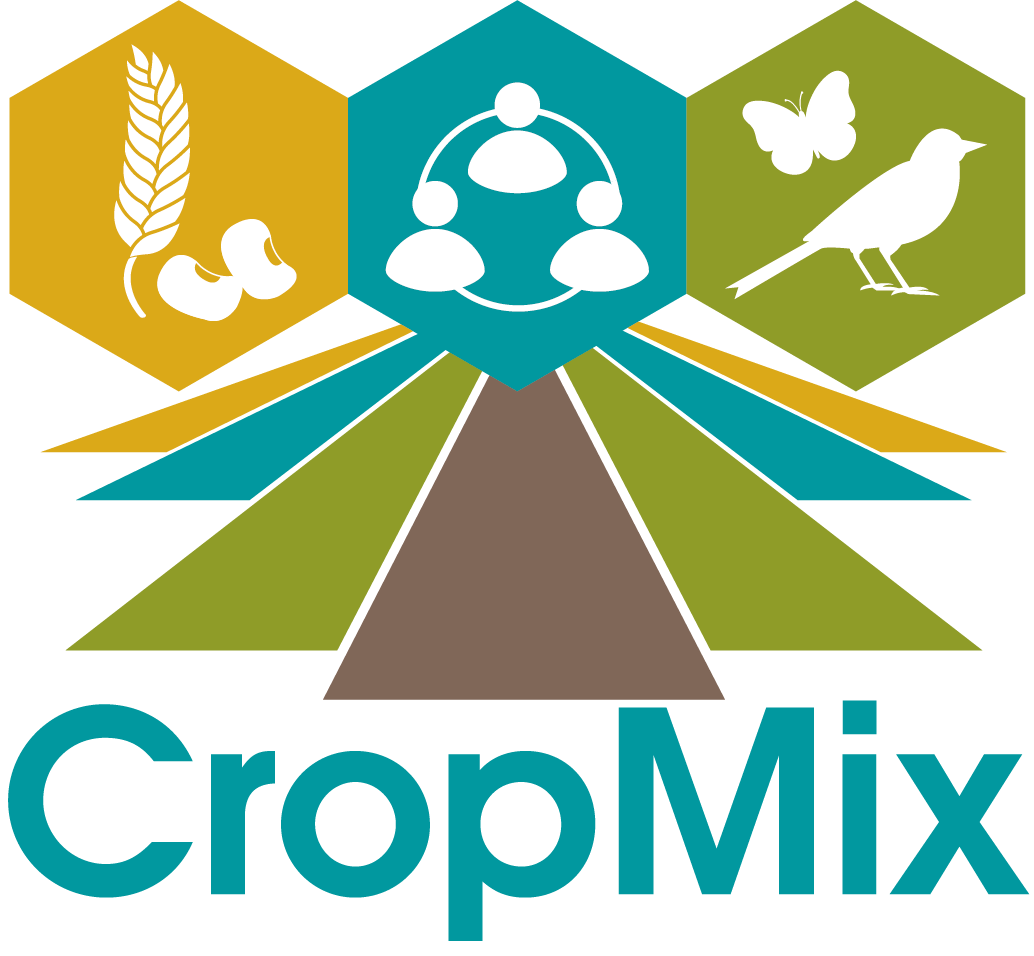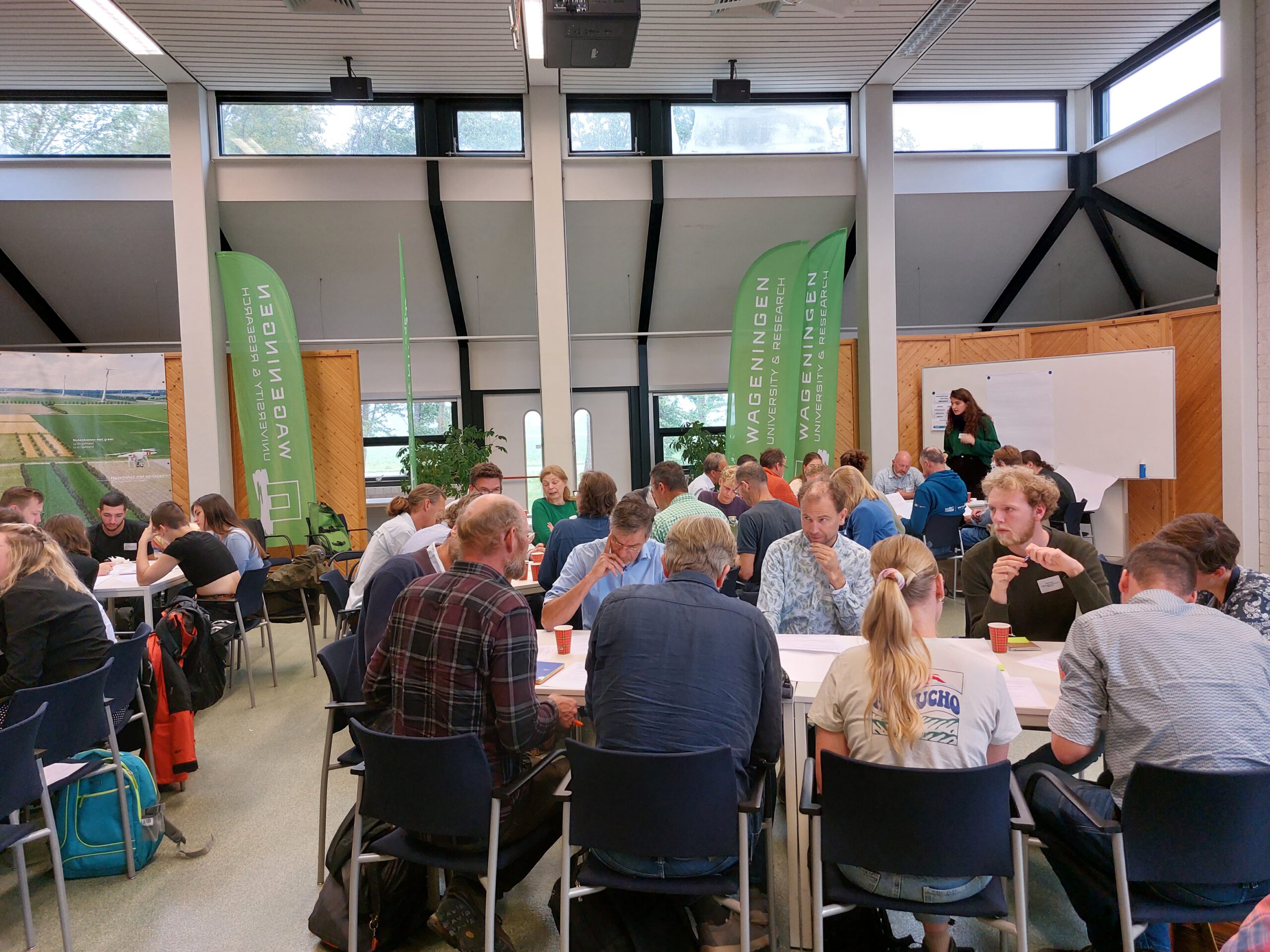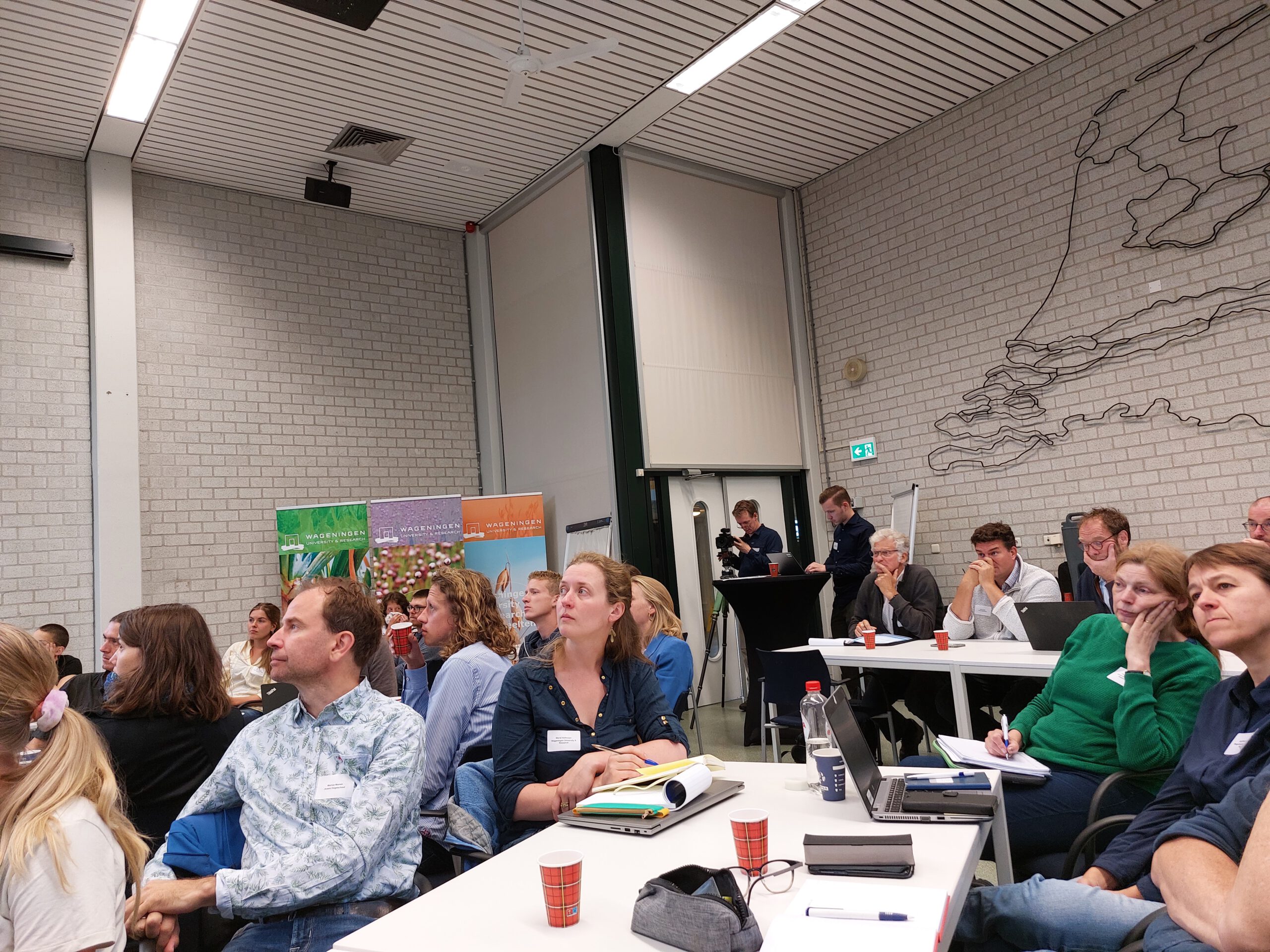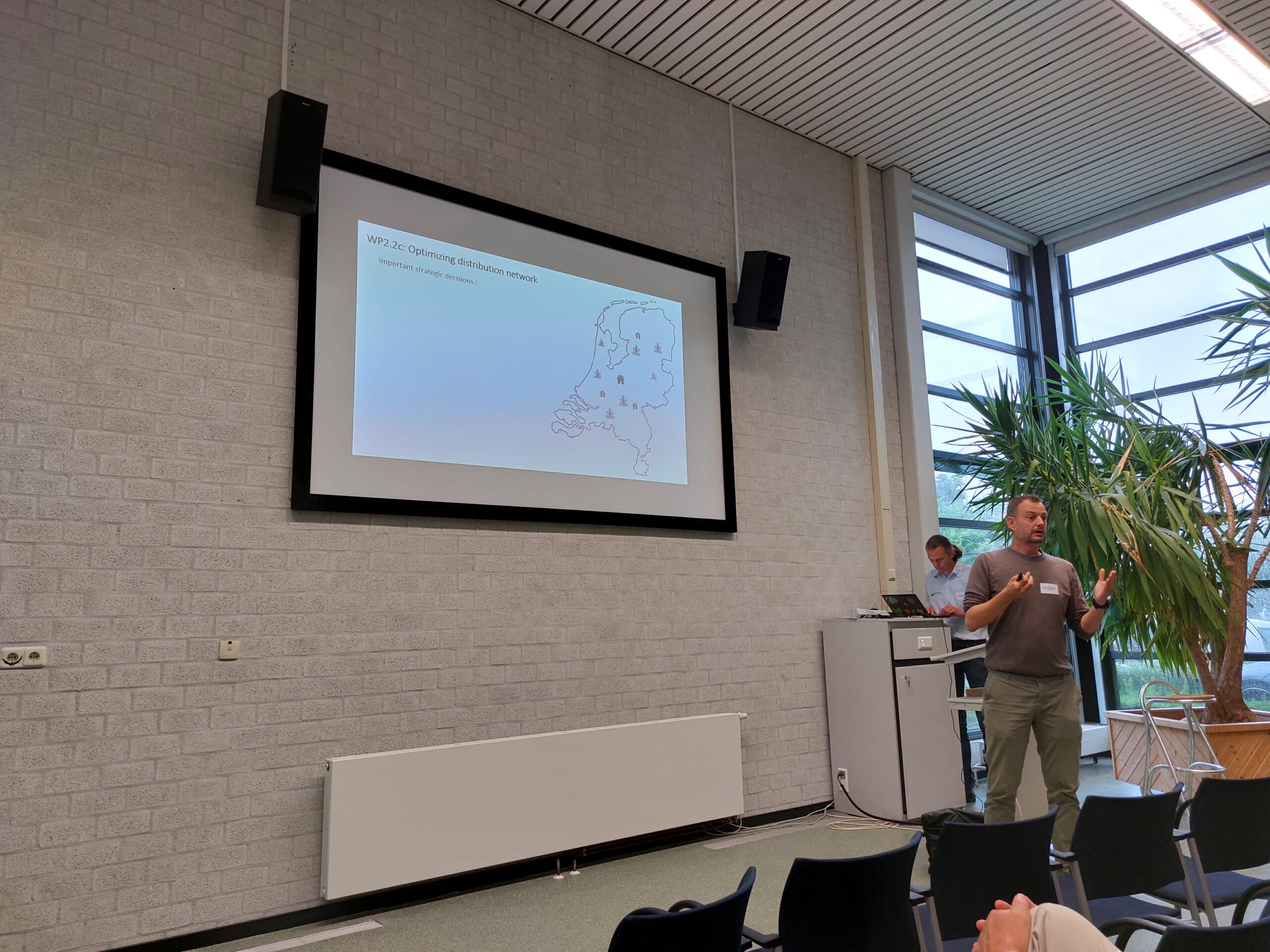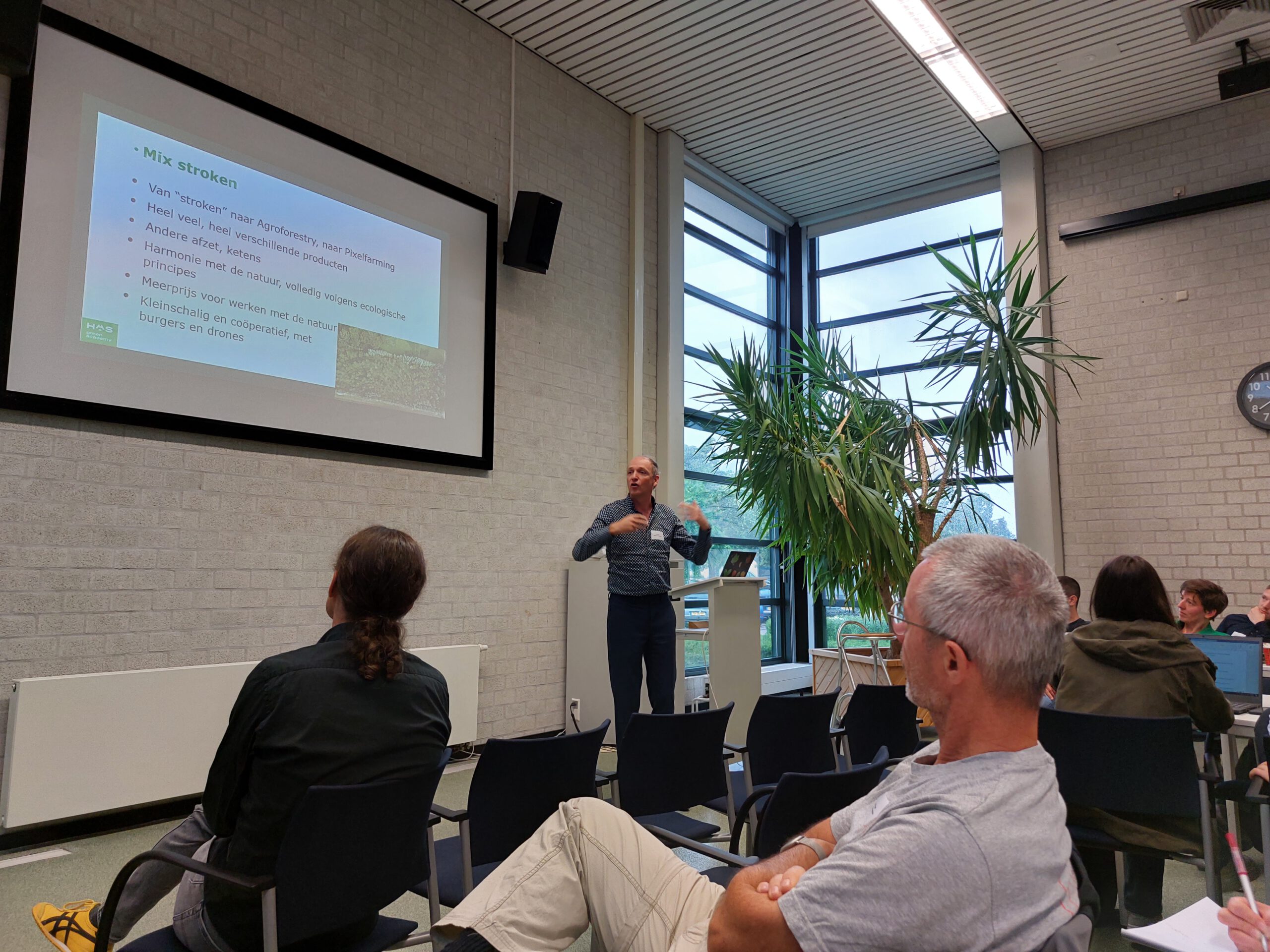It was a stormy day as storm Poly swept across the country. The northern provinces, including Flevoland, were particularly hard hit and code red was issued during the morning rush hour. Although we cancelled our consortium meeting on 5 July during the first signs of the storm, many of you were already on your way to Lelystad. So we ended up with about 50 people together at WUR Field Crops.
After a brief introduction by Erik and Dirk, we got an update from work package 1 (agro-ecology). Several PhD students have started measurements in the system experiments in Wageningen and Lelystad. The field team is also already measuring in the network of strip cropping farmers throughout the Netherlands. In fact, the field team already showed some initial results from bird counts. Although not yet scientific evidence, the first counts show that a greater diversity of species was counted on the strip cropping plots, as well as more individuals. The audience responded visibly enthusiastically to the graphs.
Next, the floor was given to Argyris Kanellopoulos, who told us in detail about the computer models that work package 2 (socio-economics and technology) intends to create. These models can help farmers make decisions and understand trade offs. They can calculate the optimal point at which to balance biodiversity and yield, but also show what happens to your yield if you maximise biodiversity and vice versa.
Most of the programme was dedicated to living labs. PJ Beers presented three possible images: a living lab revolving around wide strips, one with narrow strips (1.5 to 6 metres) and a "mix", which included agroforestry and pixel farming. Each of these images has its own opportunities and threats. For example, for a narrow strip, machinery can be a challenge, while for a wide strip where crop pesticides are sprayed, there is a challenge on cross-contamination of neighbouring strips.
The room divided over the three images and, guided by members of work package 3, the groups discussed whether they could identify with the images and the corresponding opportunities and threats. They then aimed to come up with a list of activities that could respond to those opportunities and threats. A kind of short list of ideas for experiments in the living labs, in other words.
By the end of the morning, it became clear that the "mix strips" image, in particular, was still unclear. What exactly do we mean by that? And can agroforestry and pixel cultivation be united in one image or should we keep them separate? And aren't we really just talking about shorter chains, farmer closer to consumer? Also on narrow strips, the group mentioned that a narrow strip does not have to go together with shorter chains, but that even on narrow strips you can grow a small diversity of crops for the longer chains.
It was a fruitful morning, despite some of us unfortunately not being able to attend. Work package 3 will list all the ideas raised for activities. Mid-November, during our last consortium meeting, partners and researchers can sign up for the definite living labs, so we can start at the beginning of 2024.
